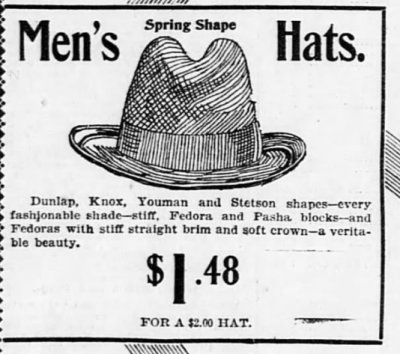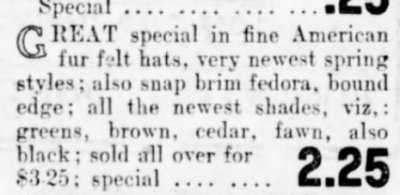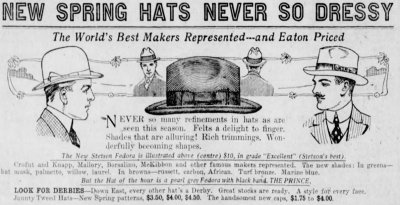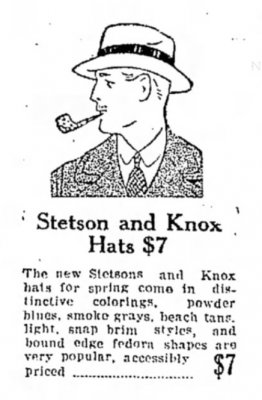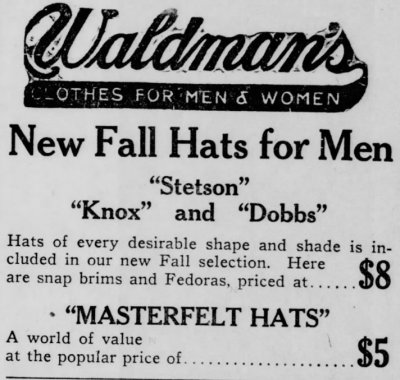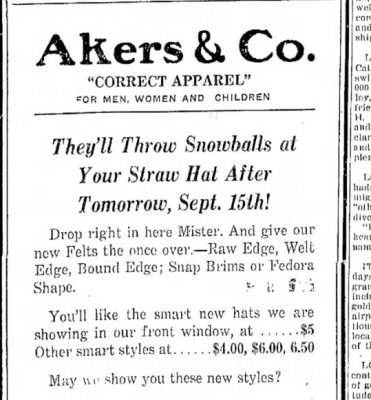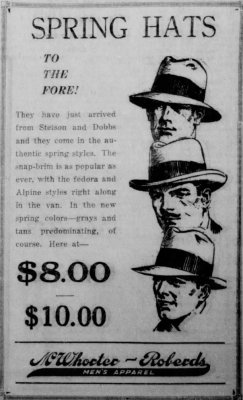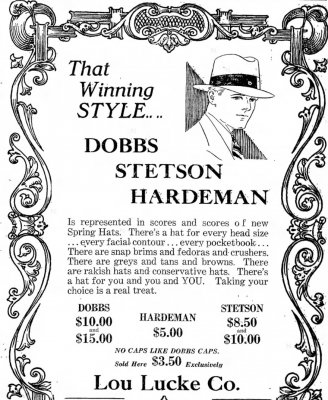JackieMatra
A-List Customer
- Messages
- 413
- Location
- Maryland, U.S.A.
Our San Franciscan colleague's lid appears to me to be significantly taller.
Our San Franciscan colleague's lid appears to me to be significantly taller.
I had Art Fawcett make up the hat in my avatar from the late 1920s or early 1930s. It was popular among the literary bohemian crowd. You can see it in my avatar, but the photo its based on is here:
http://www.thefedoralounge.com/show...y-Fedora-from-the-1920s&highlight=kaosharper1
I wonder if that style isn't related to the one worn by Oscar Wilde in the early 1890's. James Joyce , around 1904, also mentioned his "Latin Quarter" hat in one of his writings.
 Gustin Vintage Heavyweight Sweatshirt - Natural Rainbow Nep - $119 Rugged 14oz cotton that gets better with every wear.
Gustin Vintage Heavyweight Sweatshirt - Natural Rainbow Nep - $119 Rugged 14oz cotton that gets better with every wear.  Grant Stone Diesel Boot Dark Olive Chromexcel - #395 Goodyear welted, Horween Chromexcel, classic good looks.
Grant Stone Diesel Boot Dark Olive Chromexcel - #395 Goodyear welted, Horween Chromexcel, classic good looks.  Himel Bros. - The Ross Mk. 1 Leather Jacket Classic D-pocket motorcycle/aviator style jacket.
Himel Bros. - The Ross Mk. 1 Leather Jacket Classic D-pocket motorcycle/aviator style jacket. 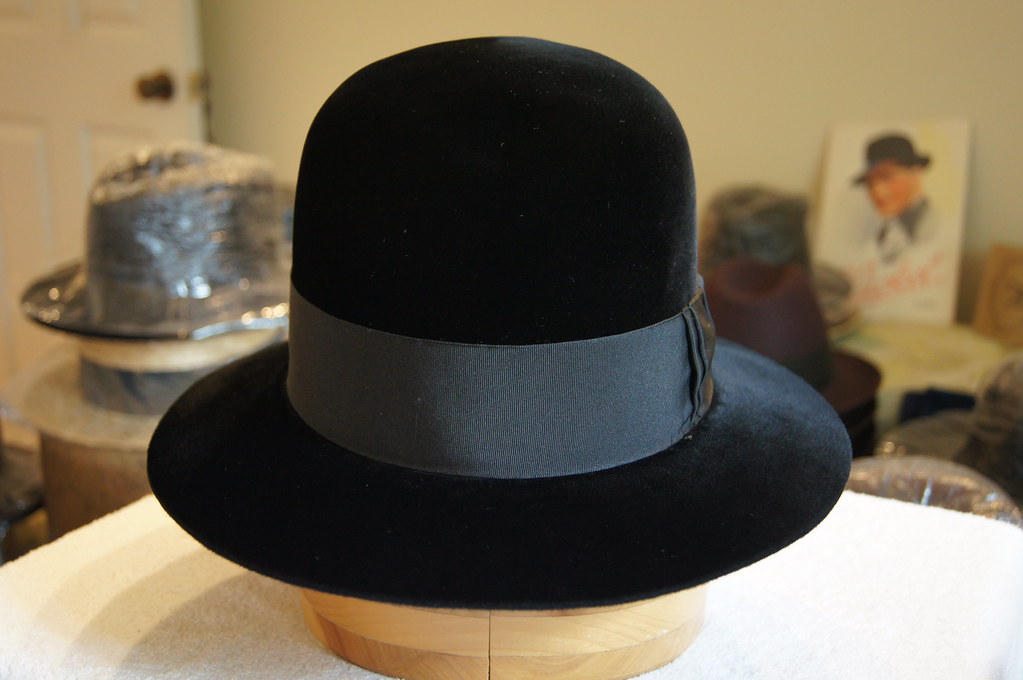
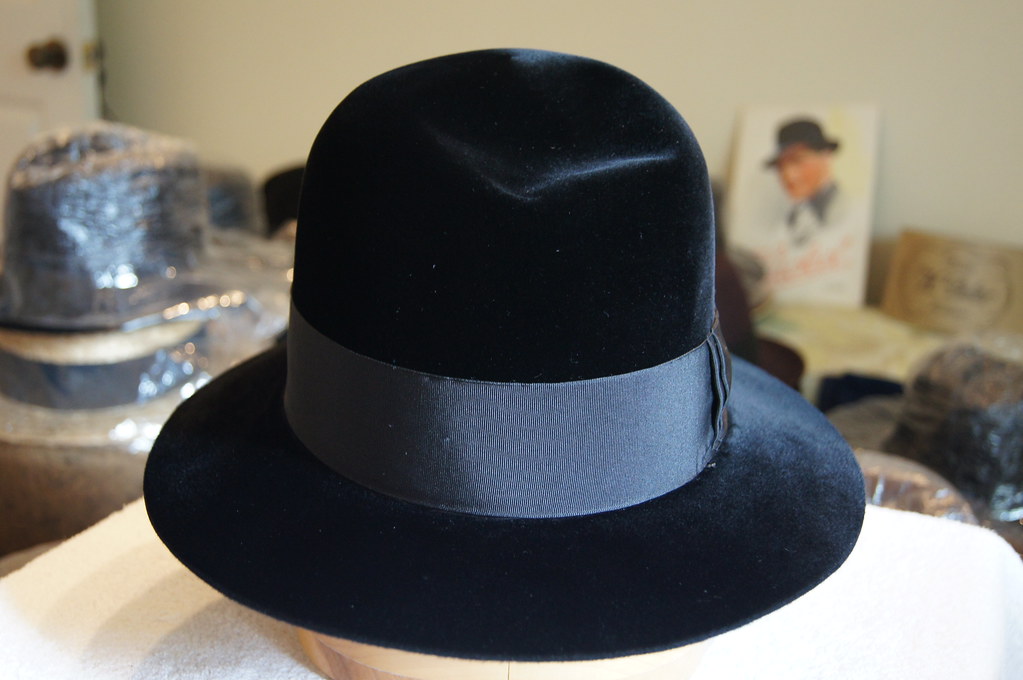
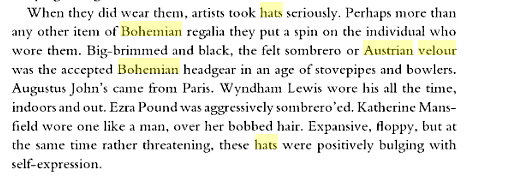

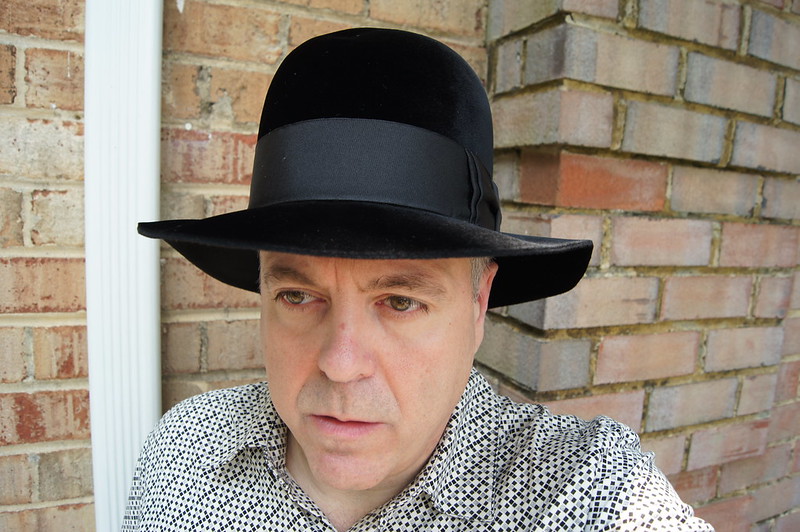

Wyndham Lewis wearing a black Austrian Velour in this manner.

I will talk a photo wearing my JHS Seal Velour setup this way.







Daniele, Great photos! The hat styles are very similar to what you see in Germany and Austria (also France, ect.) in the same time period. These are the hat styles that came over to America from Europe. Yes there were changes along the way but this is where they came from.
